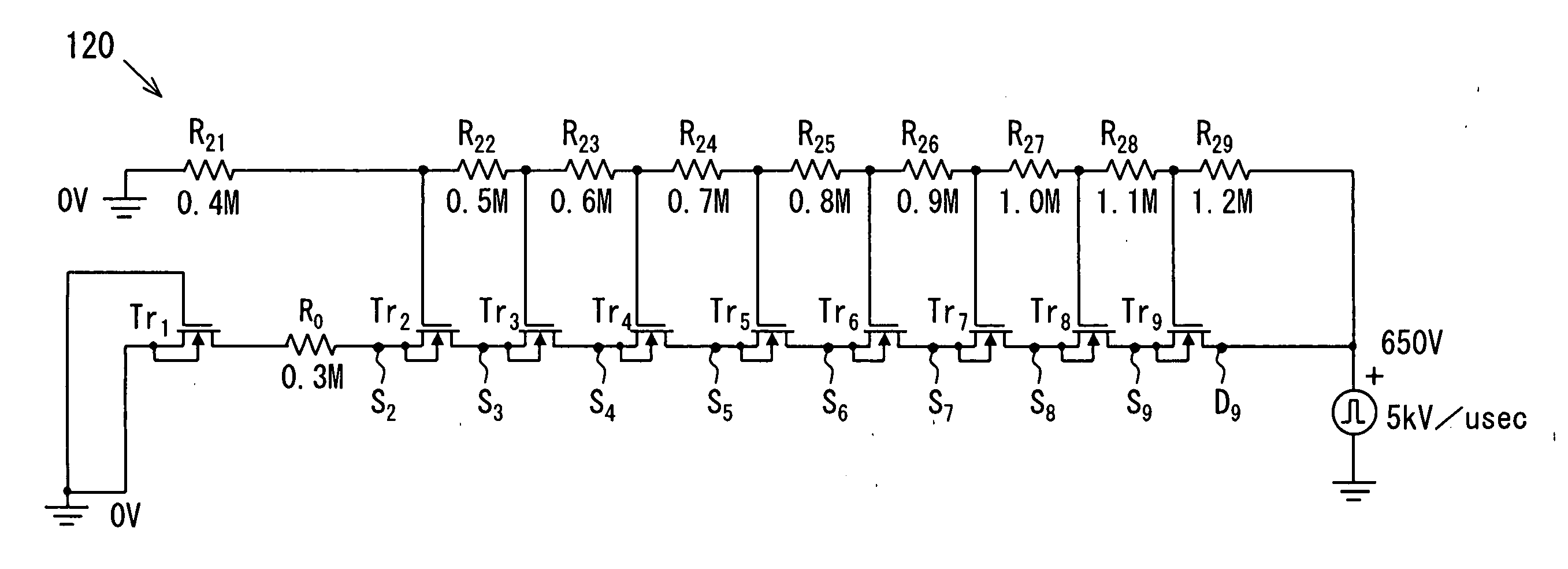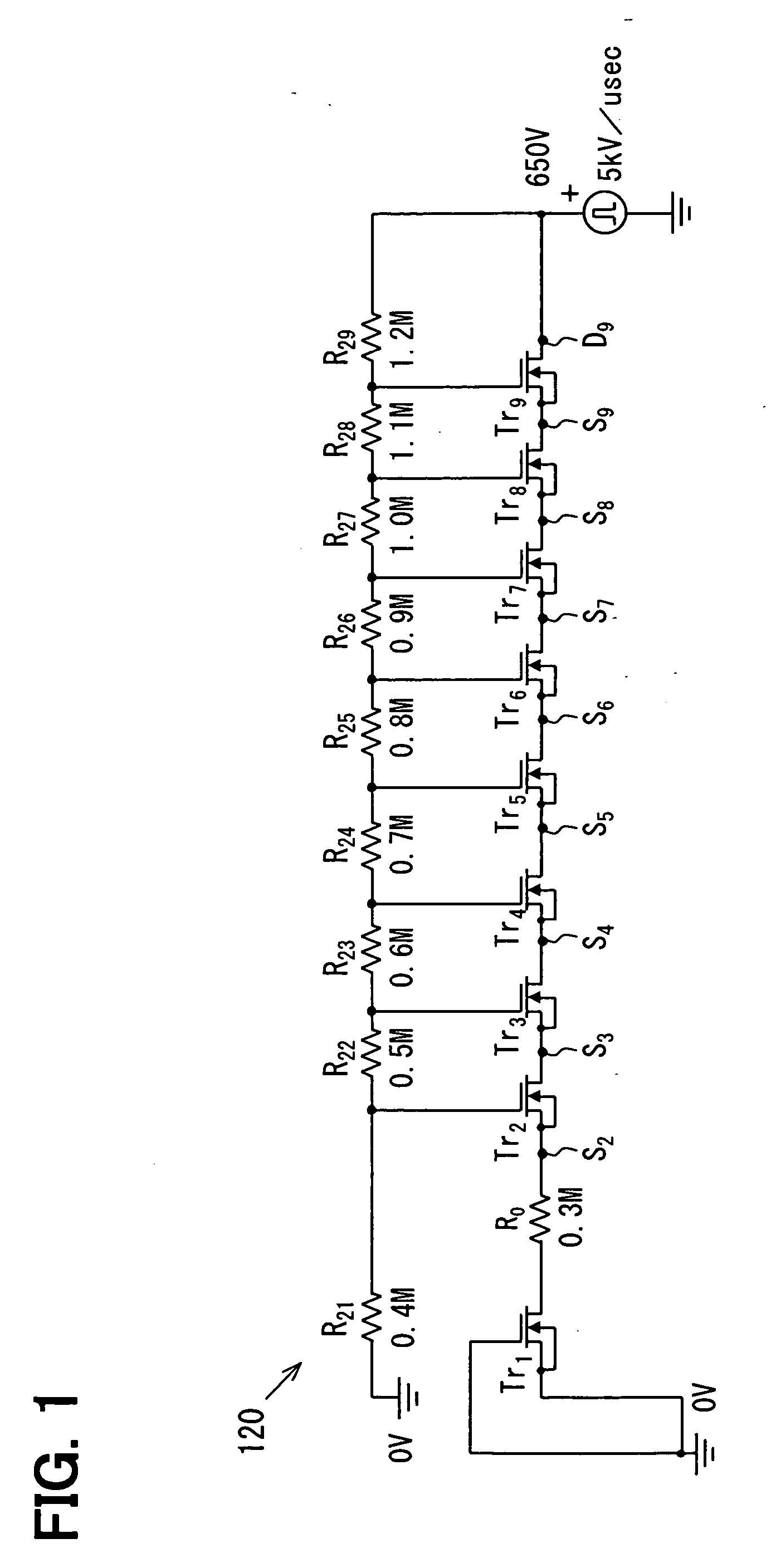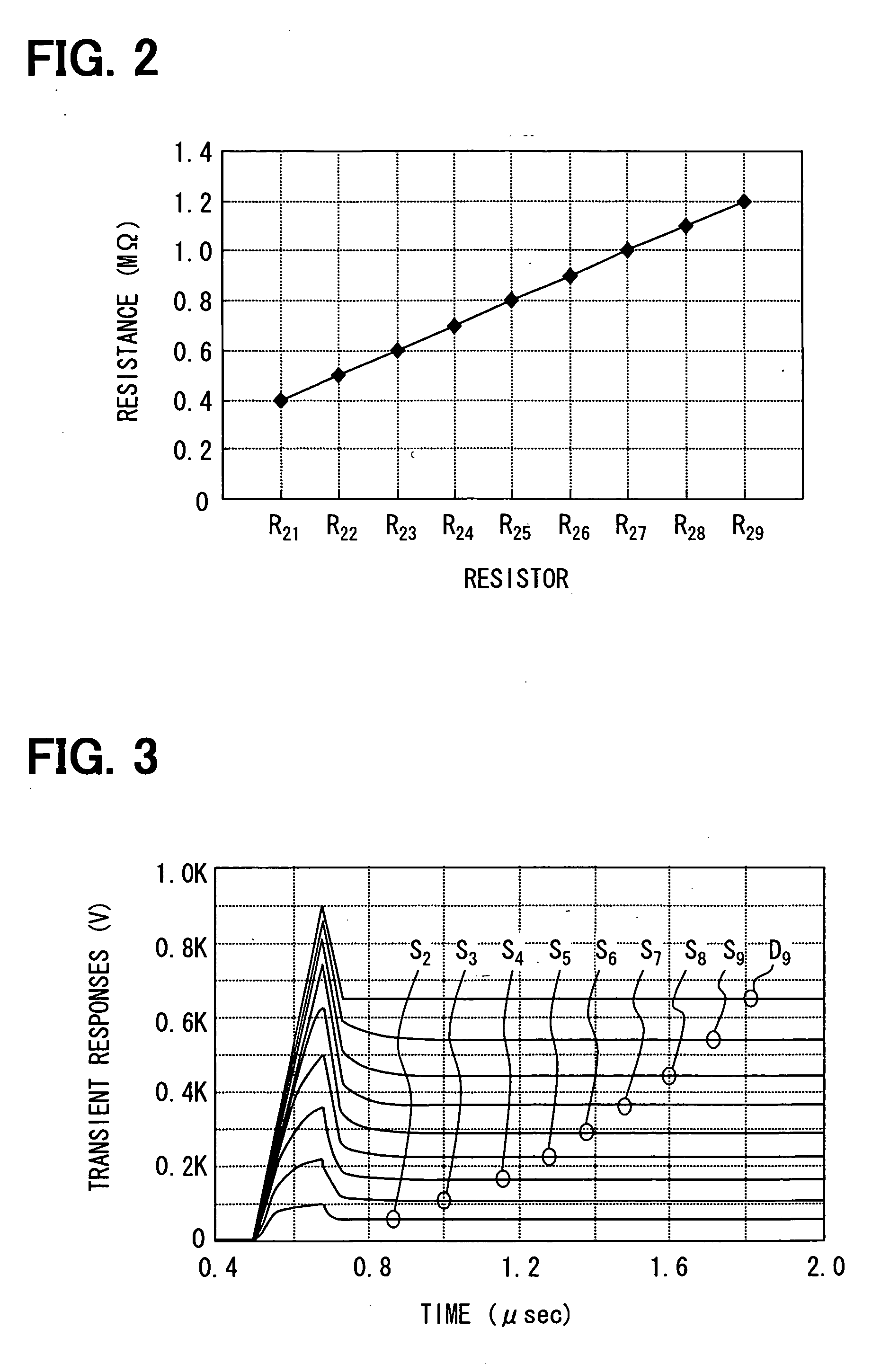Semiconductor device for high voltage IC
a high-voltage ic, semiconductor technology, applied in semiconductor devices, electronic switching, pulse techniques, etc., can solve the problems of affecting the operation of the device, the failure of the transistor, and the failure of the total circuit, so as to improve the switching speed of the device
- Summary
- Abstract
- Description
- Claims
- Application Information
AI Technical Summary
Benefits of technology
Problems solved by technology
Method used
Image
Examples
first embodiment
[0105] In view of the above points, a semiconductor device 120 of a first embodiment of the present invention is provided. FIG. 1 is an equivalent circuit diagram related to the semiconductor device 120 of a first embodiment.
[0106] The equivalent circuit diagram of the semiconductor device 120 shown in FIG. 1 owns a basically same arrangement with respect to the equivalent circuit diagram of the semiconductor device 100 shown in FIG. 24.
[0107] That is, in the semiconductor device 120 shown in FIG. 1, 9 pieces of transistor elements “Tr1” to “Tr9”, which are insulated / isolated from each other, are sequentially connected in a series connection manner between a ground (GND) potential of 0 V and a power supply potential of 650 V under such a condition that the GND-sided transistor element is defined as a first stage and the power supply-sided transistor element is defined as a ninth stage. 9 pieces of the transistor elements Tr1 to Tr9 of the semiconductor device 120 shown in FIG. 1 a...
second embodiment
[0122]FIG. 4 is an equivalent circuit diagram related to a semiconductor device 130 of a second embodiment of the present invention.
[0123] The equivalent circuit diagram of the semiconductor device 130 shown in FIG. 4 owns a basically different arrangement with respect to the equivalent circuit diagrams of the semiconductor devices 100 and 120 shown in FIG. 24 and FIG. 1.
[0124] That is, similar to the semiconductor devices 100 and 120 shown in FIG. 24 and FIG. 1, in the semiconductor device 130 shown in FIG. 4, 9 pieces of transistor elements “Tr1” to “Tr9”, which are insulated / isolated from each other, are sequentially connected in a series connection manner between a ground (GND) potential of 0 V and a power supply potential of 650 V under such a condition that the GND-sided transistor element is defined as a first stage and the power supply-sided transistor element is defined as a ninth stage. It should be understood that 9 pieces of the transistor elements Tr1 to Tr9 in the se...
PUM
 Login to View More
Login to View More Abstract
Description
Claims
Application Information
 Login to View More
Login to View More - R&D
- Intellectual Property
- Life Sciences
- Materials
- Tech Scout
- Unparalleled Data Quality
- Higher Quality Content
- 60% Fewer Hallucinations
Browse by: Latest US Patents, China's latest patents, Technical Efficacy Thesaurus, Application Domain, Technology Topic, Popular Technical Reports.
© 2025 PatSnap. All rights reserved.Legal|Privacy policy|Modern Slavery Act Transparency Statement|Sitemap|About US| Contact US: help@patsnap.com



